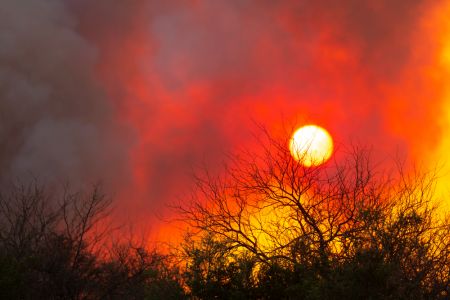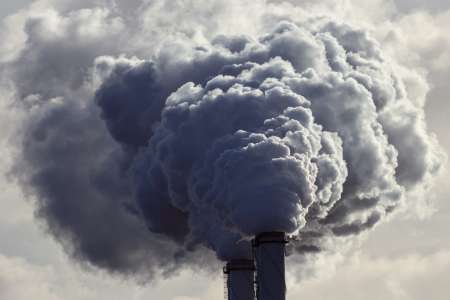Think Collapsing Glaciers Won't Affect You? Please Think Again!
Global climate change is driving warmer temperatures, which are melting and cause the collapse of Antarctic and other glaciers world wide. Their destruction is already changing your weather and causing your energy bills to rise.
09/25/2024

What exactly are glaciers?
The birth of a glacier begins with what many of us have seen happening as snow falls on cold ground and accumulates. As each year’s snowfall is added, over centuries, the accumulated snow is compressed into ice by the added weight of the new snowfalls. So long as the amount of snow accumulating in the winter months is greater than the amount that melts in the summers, the process continues, and a glacier will form and grow larger. Glaciers are only found where it is extremely cold, and warm summers do not melt the snow and ice.
People often think of glaciers and icebergs as being the same. They are not. Glaciers are only found atop land. Some are as small as a few hundred feet long, while others are well over 150 miles long. At about 25 years old, the youngest glacier, the Crater Glacier, is located on Mount St. Helens in Washington State. According to the United States Geological Survey (USGS), the oldest glacier in Antarctica is 1,000,000 years old.
Why are they important?
Glaciers are vast storehouses of fresh water, and if all glaciers were to melt, sea levels would rise by about 230 feet (70 meters). Obviously, the impacts on coastlines and cities would be catastrophic, and many would have to be abandoned. Imagine a world without New York City, London, Tokyo, and many others, let alone the thousands of smaller population centers. Conversely, if glaciers were to return to their size during the last ice age, sea levels would drop by around 400 feet. Climate change is creating warmer temperatures, leaving our glaciers in crisis and increasingly disappearing from rapid melting.
The Union of Concerned Scientists has stated that properties worth over $1 trillion could be at risk by the end of this century due to the rising sea levels driven by glacial melting. This includes around 2.4 million homes, similar to the total number in Los Angeles and Houston, and valued at about $912 billion today.
The costs of rising sea levels in lives, property values, and economic dislocation are virtually incalculable. One known factor that emerges is that by the end of the century, the number of people forced into migration globally will dwarf what is currently occurring, bringing famine, political chaos, wars, and disease.
How do we know they are in danger of disappearing?
Understanding how the glaciers are melting and how fast tracking and measuring ice loss is critical to understanding how climate change and other factors impact our planet. In the past, partly because the tools were not as sophisticated as today, scientists underestimated how fast glaciers were disappearing. They are now warning that the glaciers are in grave danger. NASA estimates that Antarctica loses around 150 billion tons of ice annually, while Greenland loses about 270 billion tons annually.
Just as you can’t see how much grass grows in an hour because the time is too short, it isn’t easy to see the effects of glacier melt and sea level rise yearly. Currently, as the measurements are more accurate and the melting is accelerating, it is clear that we should not ignore the warnings the melting glaciers are giving us.
Losing glaciers is an existential crisis deeply affecting the diversity of life on Earth, including humans. The question today isn’t whether glaciers are in danger but how quickly they will vanish and whether we can save or slow down the damage.
What’s affected when glaciers melt?
- Humans
When glaciers melt, the runoff water causes coastal flooding, rising sea levels worldwide, and saltwater intrusion into soils. Much of the water from mountain glaciers ends up in the oceans, causing much damage, while some of it causes severe flooding in land areas as it flows downhill. These floods ruin homes, roads, and crops. Homes and infrastructure are destroyed, and saltwater intrusion brings salt into the soil, making it difficult or impossible for crops to grow and people to feed themselves. Over time, as glaciers disappear completely, glacial waters normally used for irrigation affect farming and food production. It also creates a shortage of water used for drinking, cooking, and cleaning.

Saltwater intrusion is a threat to Coastal Agriculture. Image adapted from ian.umces.edu (University of Maryland Center for Environmental Science)/U.S. Department of Agriculture
While homes can be rebuilt, soil ruined by saltwater intrusion is far more damaged than after freshwater flooding. When flooded by freshwater, soils can recover relatively rapidly. But when the soil contains too much salt, it isn’t easy to restore it. Remediation, when possible, can take several months to several years and is difficult to achieve. These issues, when severe, force people to migrate for a better life.
- Marine Ecosystems
As glacial freshwater flows into oceans and mixes with saltwater, it is no surprise that normal salt levels are lowered, especially near coastlines. This contributes to ocean salinity changes, negatively affecting ocean life by stressing creatures sensitive to temperature and salt levels and reducing their food sources.
The effects of these changes are extremely damaging to everything from tiny plankton and corals to giant whales. Some sea animals, like crabs and trout, can tolerate salinity changes, but most cannot. Those that can’t are called stenohaline, which means they can only live in a narrow range of salt levels. For them, freshwater entering the ocean can be dangerous and even lethal.

A goldfish is one of the stenohaline organisms that can not adapt to salinity changes. Image by Andrey Armyagov/Depositphotos
Ocean water becoming less salty when diluted by freshwater affects ocean currents critical for regulating climate, such as the Atlantic Meridional Overturning Circulation (AMOC). When severe, these issues force people to migrate for a better life. The AMOC is a critical part of the global ocean conveyor belt, which helps regulate climate by transporting warm water from the tropics to the North Atlantic and bringing cooler, denser water back south. It significantly influences weather patterns in Europe, North America, and the broader climate system.
Recent studies suggest that the AMOC is weakening due to factors like melting ice sheets in Greenland, which add fresh water to the ocean and disrupt the balance of salinity that drives this circulation. A collapse or significant slowdown of the AMOC could lead to severe climate consequences, such as more extreme winters in Europe, changes in rainfall patterns across the globe, and potential disruptions to marine ecosystems.
Weather patterns in large areas will be disastrously altered if these currents change or even disappear. Some places will have cooler temperatures or droughts, while others will become hotter with stronger storms. Importantly, these adverse effects will cause more glacial melting and changes in ocean salinity, creating a self-perpetuating cycle.
Scientists are still trying to understand the full extent of these changes. Clearly understood is that steady ocean circulation is essential for keeping the Earth’s climate stable, that disruptions to it can affect us all, and that our reliance on fossil fuels alters the currents and our futures.
What is albedo, and why should you care?
The ice and snow in glaciers and other areas with snow coverage foster a process called “albedo.” These areas are highly reflective of sunlight, keeping our planet cool. But as glaciers melt, there’s less ice to reflect sunlight, which makes the Earth warmer—the “albedo process.”
It is intuitively easy to understand that places with low albedo absorb more energy from the sun and become warmer. In contrast, high albedo areas better reflect the sun’s rays into the atmosphere. Low albedo areas are like reflective mirrors. Ice and snow-covered areas are examples of low albedo areas and are great at reflecting sunlight into space. This helps keep our planet comfortable and livable. However, as glaciers and permafrost melt, these areas shrink, causing more heat to be absorbed.

The photo illustrates places with low albedo, such as water and forests, and those with high albedo, including snow, ice, and sand. Credit: ces.fau.edu/NASA
Once a certain point is reached, a hard-to-stop feedback loop is created when reflective surfaces disappear. Many scientists believe we are on the verge of creating an unstoppable loop.
What can we all do to help?
Glacial destruction is mainly caused by global climate change and high atmospheric carbon dioxide levels from burning fossil fuels and other gases like methane, leading to a warmer climate. Our reliance on fossil fuels, including gasoline and diesel vehicles and coal and petroleum-powered plants, contributes significantly to these emissions. We must lower greenhouse gas emissions by reducing our dependence on fossil fuels to defeat or slow climate change.
Achieving this requires that everyone understands how important glaciers are in maintaining the health of our world. Healthy glaciers are essential for keeping our planet livable. No action will be taken if we don’t recognize the environmental harm destroying the climate causes or understand its impact.
Glaciers are vanishing, but it’s not too late to act. Each of us can play a role in slowing their decline. Here’s how you can help:
- Conserving energy in the home by regulating heating and air conditioning use.
- If possible, use public transportation, carpooling, biking, or walking.
- Drive fuel-efficient vehicles.
- Support renewable energy.
- Reducing, reusing, and recycling.
- Educate and advocate.
- Invest in green companies.
- Adjusting your diet to eliminate foods that are not eco-friendly.
The time to act is now. Every small step you take, from saving energy to voting for climate-conscious leaders, contributes to a future where glaciers can survive and where we all can thrive. Please share this post, click below for more ways to help, and let’s protect our planet together.




















